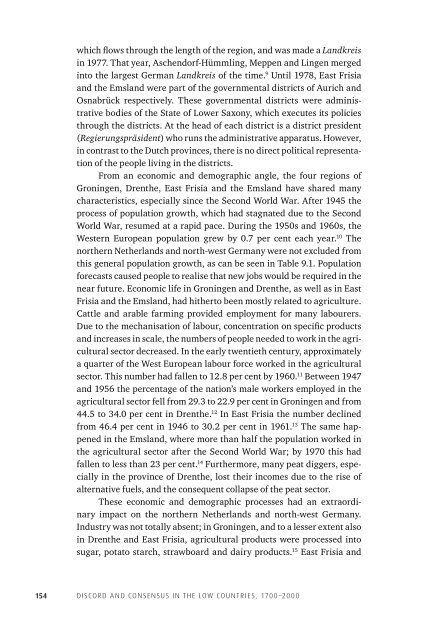Discord Consensus
7aze300jFJo
7aze300jFJo
Create successful ePaper yourself
Turn your PDF publications into a flip-book with our unique Google optimized e-Paper software.
which flows through the length of the region, and was made a Landkreis<br />
in 1977. That year, Aschendorf-Hümmling, Meppen and Lingen merged<br />
into the largest German Landkreis of the time. 9 Until 1978, East Frisia<br />
and the Emsland were part of the governmental districts of Aurich and<br />
Osnabrück respectively. These governmental districts were administrative<br />
bodies of the State of Lower Saxony, which executes its policies<br />
through the districts. At the head of each district is a district president<br />
(Regierungspräsident) who runs the administrative apparatus. However,<br />
in contrast to the Dutch provinces, there is no direct political representation<br />
of the people living in the districts.<br />
From an economic and demographic angle, the four regions of<br />
Groningen, Drenthe, East Frisia and the Emsland have shared many<br />
characteristics, especially since the Second World War. After 1945 the<br />
process of population growth, which had stagnated due to the Second<br />
World War, resumed at a rapid pace. During the 1950s and 1960s, the<br />
Western European population grew by 0.7 per cent each year. 10 The<br />
northern Netherlands and north-west Germany were not excluded from<br />
this general population growth, as can be seen in Table 9.1. Population<br />
forecasts caused people to realise that new jobs would be required in the<br />
near future. Economic life in Groningen and Drenthe, as well as in East<br />
Frisia and the Emsland, had hitherto been mostly related to agriculture.<br />
Cattle and arable farming provided employment for many labourers.<br />
Due to the mechanisation of labour, concentration on specific products<br />
and increases in scale, the numbers of people needed to work in the agricultural<br />
sector decreased. In the early twentieth century, approximately<br />
a quarter of the West European labour force worked in the agricultural<br />
sector. This number had fallen to 12.8 per cent by 1960. 11 Between 1947<br />
and 1956 the percentage of the nation’s male workers employed in the<br />
agricultural sector fell from 29.3 to 22.9 per cent in Groningen and from<br />
44.5 to 34.0 per cent in Drenthe. 12 In East Frisia the number declined<br />
from 46.4 per cent in 1946 to 30.2 per cent in 1961. 13 The same happened<br />
in the Emsland, where more than half the population worked in<br />
the agricultural sector after the Second World War; by 1970 this had<br />
fallen to less than 23 per cent. 14 Furthermore, many peat diggers, especially<br />
in the province of Drenthe, lost their incomes due to the rise of<br />
alternative fuels, and the consequent collapse of the peat sector.<br />
These economic and demographic processes had an extraordinary<br />
impact on the northern Netherlands and north-west Germany.<br />
Industry was not totally absent; in Groningen, and to a lesser extent also<br />
in Drenthe and East Frisia, agricultural products were processed into<br />
sugar, potato starch, strawboard and dairy products. 15 East Frisia and<br />
154<br />
DISCORD AND CONSENSUS IN THE LOW COUNTRIES, 1700–2000


